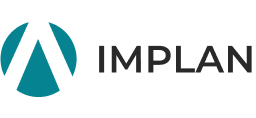Primary inputs
Personal Taxes
Personal Taxes include Income Tax (net of refunds), Property Tax, Motor Vehicle License, Non-Taxes, and Other Taxes. Income Tax is paid not only on wages, but also on rental income, dividend income, interest income, and capital gains. Contributions for government social insurance are not included.
The effective personal income tax rate in IMPLAN is a weighted average of the individual rates, depending on the amount of each paid in a given region in a given year. In IMPLAN, all personal income tax is assumed to be paid at the place of residence; however, in the real world, the personal income tax paid on wage income (which is part of what is withheld from your paycheck) is paid to the place of employment.
For additional details, visit the IMPLAN Tax Impact Report.
Personal consumption expenditures (PCE)
NIPA final-demand component for purchases by the household sector. In addition to showing what households spend, it also includes the current operating expenses of nonprofits that primarily serve households. (BEA)
PCE bridge table
Table that identifies the I-O commodity composition of each PCE category in the NIPAs. It shows the value of the transactions in producers— and purchasers—prices and the associated transportation costs and margins. (BEA)
Own-account construction
(Previously force account construction). Own-account new construction refers to construction activities performed by businesses, governments, or persons for themselves rather than by purchasing from construction businesses. Beginning with the 1997 benchmark I-O accounts, own-account new construction is treated as being produced by the industries in which the construction occurs and then “purchased” in final uses as investment. In the 1997 standard make and use tables, own-account new construction, including output and all inputs, is shown as a secondary product of the industry in which the activity occurs. Previously, own-account construction was reassigned to the new-construction industry and included as part of its primary production. In cases where the general contractor for a new housing unit intends to be an owner-occupant, the resulting new construction is now shown in the owner-occupied dwellings industry. For government, it is now shown in the general government industry. Beginning with the 1997 standard and supplementary make and use tables, own-account maintenance and repair construction is no longer treated as output. Previously, own-account maintenance and repair activities were included in the maintenance and repair construction industry and then purchased by the industry producing those services. This change is intended to facilitate comparisons of data from the I-O accounts with other statistical data on industries. (BEA)
Output multipliers
Output
Output represents the value of industry production. In IMPLAN these are annual production estimates for the year of the data set and are in producer prices. For manufacturers this would be sales plus/minus change in inventory. For service sectors production = sales. For Retail and Wholesale trade, Output = gross margin (or Marginal Revenue) and not gross sales (Total Revenue), which includes the value of the goods sold.
For industries that do not hold inventory, output equals revenues (sales). For industries that do hold inventory, output equals revenues less any net change in inventory (additions to inventory less sales out of inventory); for these industries, it is possible for a year’s sales to exceed that year’s value of production, if some of those sales came out of inventory (a previous year’s production); in I-O models, what matters is the value of production that occurred in a year, since production is what drives the purchases of inputs. Sales of items that have been sitting in inventory do not generate indirect and induced impacts this year since they were produced in a previous year; thus, we don’t want to count them as part of this year’s output, else we’d overstate the indirect and induced impacts.
IMPLAN defines Total Industry Output as the Value of Production or Labor Income + Intermediate Expenditures + Tax on Production and Imports + Other Property Income. For detailed information about Output and its components visit Understanding Output (O).



